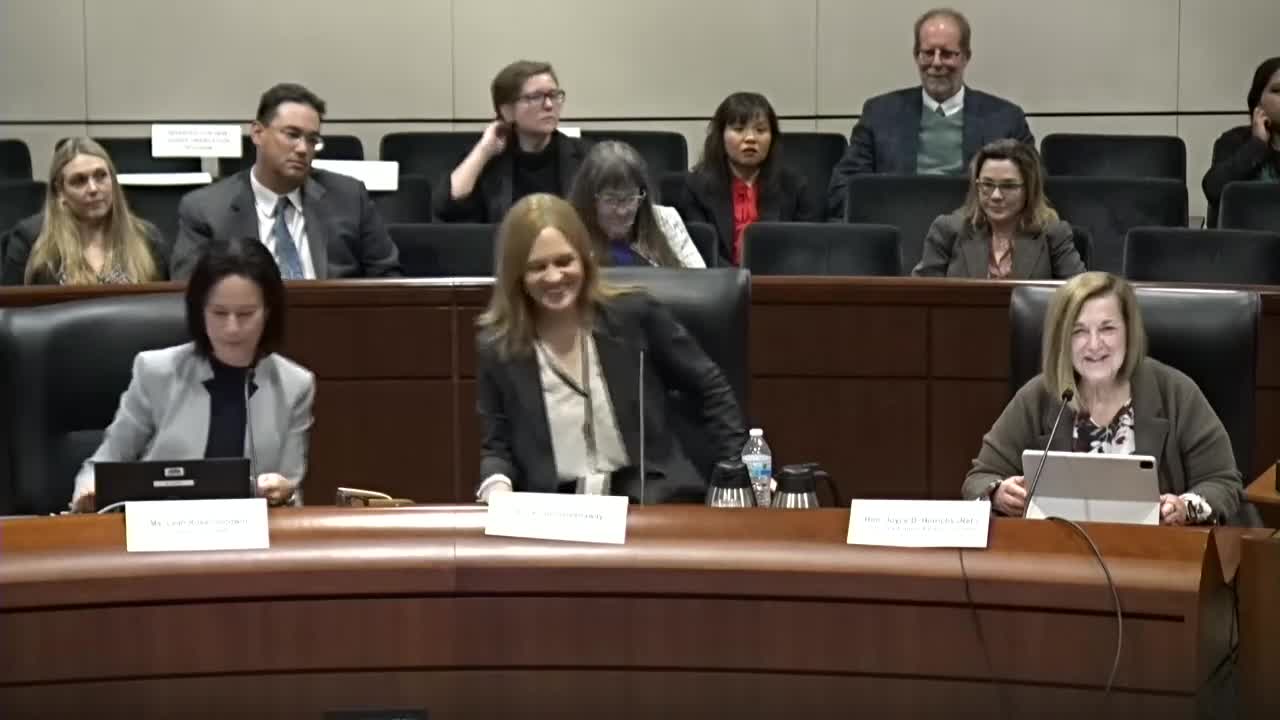Judicial Council approves updated Resource Assessment Study (RAS) case weights after 2024 time study
April 25, 2025 | Judicial Council of California, Judicial, California
This article was created by AI summarizing key points discussed. AI makes mistakes, so for full details and context, please refer to the video of the full meeting. Please report any errors so we can fix them. Report an error »

The Judicial Council on April 25 approved updates to the Resource Assessment Study (RAS) model, including new and revised case weights derived from a 2024 time study and related model parameter changes to be used in the fiscal 2025' 26 workload formula.
Judge Heather Hinrichs (chair of the Data Analytics Advisory Committee) and staff presented the findings. The study covered 19 trial courts representing small, medium and large jurisdictions and involved more than 5,000 court staff who logged time entries. Presenters said the time study captures case-processing time and non-case-processing tasks (for example, public-counter work and warrant processing) and that two new case weights were added: mental-health certification and CARE Act-related cases. The committee also recommended consolidating two infraction case weights into a single infraction weight after finding no workload difference by filing volume.
Staff reported the work-year value decreased by approximately 585 minutes (about 9.75 hours) compared with the prior study, reflecting a newly added state holiday and a modest increase in annual leave usage. Presenters emphasized a key study finding: unweighted filing volumes do not equal workload; weighted caseload methodology better captures workload complexity. The committee also noted increases in case complexity across many case types (courts cited post-judgment resentencing, the Racial Justice Act, diversion programs, juvenile realignment and expanded domestic-violence restraining-order options) and called out staff turnover and training demands as additional workload impacts.
The council approved using the updated case weights and model parameters in the FY 2025' 26 workload and funding formula and directed the Data Analytics Advisory Committee to continue monitoring workload changes and to consider periodic interim adjustments if necessary.
Judge Heather Hinrichs (chair of the Data Analytics Advisory Committee) and staff presented the findings. The study covered 19 trial courts representing small, medium and large jurisdictions and involved more than 5,000 court staff who logged time entries. Presenters said the time study captures case-processing time and non-case-processing tasks (for example, public-counter work and warrant processing) and that two new case weights were added: mental-health certification and CARE Act-related cases. The committee also recommended consolidating two infraction case weights into a single infraction weight after finding no workload difference by filing volume.
Staff reported the work-year value decreased by approximately 585 minutes (about 9.75 hours) compared with the prior study, reflecting a newly added state holiday and a modest increase in annual leave usage. Presenters emphasized a key study finding: unweighted filing volumes do not equal workload; weighted caseload methodology better captures workload complexity. The committee also noted increases in case complexity across many case types (courts cited post-judgment resentencing, the Racial Justice Act, diversion programs, juvenile realignment and expanded domestic-violence restraining-order options) and called out staff turnover and training demands as additional workload impacts.
The council approved using the updated case weights and model parameters in the FY 2025' 26 workload and funding formula and directed the Data Analytics Advisory Committee to continue monitoring workload changes and to consider periodic interim adjustments if necessary.
View full meeting
This article is based on a recent meeting—watch the full video and explore the complete transcript for deeper insights into the discussion.
View full meeting
